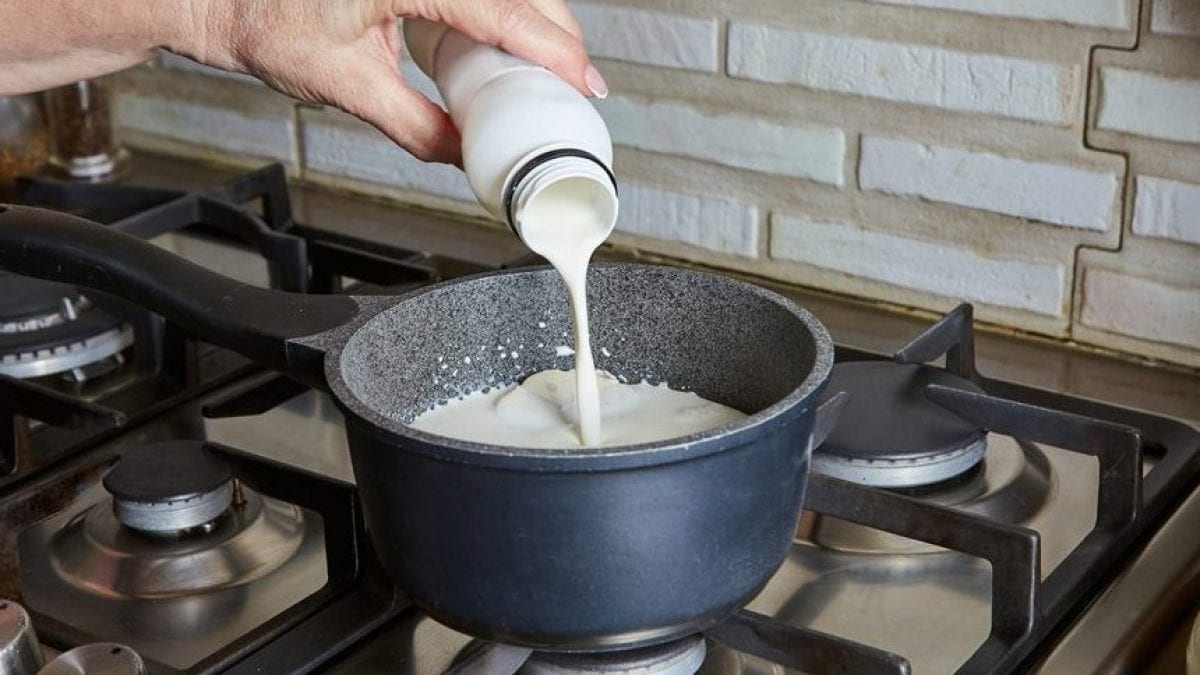
Heating milk is a practically daily gesture: it is done when preparing it for breakfast, or when it is used as an ingredient in cooking, for example in a cream or pudding. A habitual operation that is done automatically and which, however, hides a detail that should not be underestimated: the temperature. We are not suggesting that you should equip yourself with a thermometer every time you pour milk into the jug or saucepan, but leaving it on the stove for too long could partially alter its organoleptic qualities and nutritional properties. Paying a little more attention allows the drink to maintain its characteristics intact and also to correctly perform its function in recipes.
Cow's Milk: Composition and Heat Treatments
Cow's milk is mainly made up of water (more than 80%) and contains sugars (especially lactose), fats, proteins (casein and whey proteins), mineral salts (primarily calcium and potassium), vitamins A, B, C and folates. It is a nutritious food that when it arrives in our homes has already undergone a pasteurization process, that is, a heat treatment required by law when fresh milk is marketed, which has the aim of making it a safe product, eliminating the microbial load that is potentially dangerous to health. Even the long-life (UHT) milk that we find in the supermarket has undergone a sanitization process called sterilization, where it comes into contact with very high temperatures that allow it to be kept out of the refrigerator for a long time. This means that unless you are dealing with raw milk, heating it has no food safety purpose and therefore there is no need to boil it.

The Consequence of Overheating
In contact with heat, the structure of milk begins to change: this can be seen empirically starting from 140-150°F/60-65°C, when the formation of the classic skin can occur: a thin layer made up of whey proteins (located in the aqueous part that begins to evaporate), fats and mineral salts, a sign that the stability point has been exceeded, even if only superficially. Reaching boiling point, between 195°F/90°C and 203°F/95°C, entails more marked consequences, such as the degradation of heat-sensitive vitamins (especially B and C), folic acid and the coagulation of caseins.
Furthermore, milk left on the flame at high temperatures can suffer from the Maillard reaction (although rare at home), which involves the loss of lactose, essential amino acids and alterations in taste. Compared to heat, however, milk fats are essentially stable: boiling does not reduce their quantity, but some long-chain fats change to short and medium chains, which are easily absorbed by our body and converted into energy. High temperatures can help to better tolerate milk proteins: it has been shown that baked milk products (such as cakes and pastries) trigger fewer allergic reactions caused by caseins.

Microwave and Stove: Where to Heat Milk
In the home, milk is often heated in the microwave or on the stove. The first has the positive aspect of being quick, but we know that the heat is distributed unevenly, generating areas that are hotter than others (as also happens with tea and herbal teas). This means that, even if not visibly, the milk can reach high temperatures in some areas of the container, with the consequent risk of burning the palate. The second is easier to control, even if a flame that is too high or a minimal distraction is enough to cause uncontrolled boiling, which leads to the rapid and annoying escape of the liquid from the pan. To avoid having to resort to a thermometer, it is useful to observe the moment in which the milk begins to smoke slightly without yet boiling, or to notice the appearance of small bubbles on the sides of the container.
The Ideal Temperature: Do Not Exceed 160°F/70°C
When making a béchamel sauce, a cream or a homemade cappuccino, it is important to keep an eye on the temperature of the milk. In pastry making, for example, milk that is too hot can prematurely cook the egg yolks or alter the balance of the starches, compromising the success of an egg-based cream. In cappuccino, the frothed milk should be between 131°F/55°C and 150°F/65°C. In general, staying below 160°F/70°C is a prudent rule that allows you to enjoy the best qualities of the milk without running into technical problems.
;Resize,width=767;)
